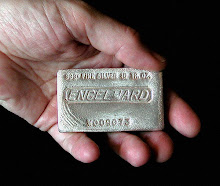 The question that most people have when purchasing silver is; is the silver real? How can you tell if the silver is real? Well, there’s several ways to test it to make sure you are getting what you’ve paid for? When it comes to testing silver the smaller the quantity the easier it is to test for it’s purity, while other sizes such as 100 oz and above will require other methods to confirm it’s purity. When it comes to silver, the likelihood of it being fake is a lot less than gold; this is largely due to its low price. Some of the way to prevent getting fake silver is by purchasing known brands such as: Academy, Johnson Matthey, Engelhard, A-mark and etc….. Anyways, I will list ways you can test your silver for its purity.
The question that most people have when purchasing silver is; is the silver real? How can you tell if the silver is real? Well, there’s several ways to test it to make sure you are getting what you’ve paid for? When it comes to testing silver the smaller the quantity the easier it is to test for it’s purity, while other sizes such as 100 oz and above will require other methods to confirm it’s purity. When it comes to silver, the likelihood of it being fake is a lot less than gold; this is largely due to its low price. Some of the way to prevent getting fake silver is by purchasing known brands such as: Academy, Johnson Matthey, Engelhard, A-mark and etc….. Anyways, I will list ways you can test your silver for its purity.First test is acid test. This test is especially effective if you have small quantify of silver such as silver coins or small silver bars. This test more or less just tests for the outside of the silver which in most cases if test passed then you can assume the rest of the silver content is real due to it’s small size. This test is done with nitric acid and when you do this test it is better if you find an area on the silver that is a bit blemished already so that you don’t stain the silver and apply a small quantity of acid. Like I said this test will test the surface area and when it comes to larger silver bars it will be more difficult to tell and will require additional test methods.
Second test is the ping test. Ping test basically is just using an object and hitting against the silver coin or bar and you have to listen to the unique sound that it makes. Typically silver will have a longer ring than fake ones. The sound that it makes may vary, since the shape of the bars can be different and also if it is the same bar and came from a different mold it could also sound different. With coins I would suggest putting the silver coin on the tip of your index finger and take another coin and strike the edge of the coin and you should hear a brilliant ring to it. If the coin is fake the ring usually more low pitched and ring does last as long. When it comes to silver bars larger than 100 oz you need to put the silver bar inside a plastic bag and take a small hammer and gently bang on the bar to listen for similar ring. Again the ring should be bright and sort of dragged on.
The final test is probably one you should avoid, this involves drilling. With silver coins or bars under 100 oz I wouldn’t recommend this test. With the drill test basically you will take a drill and drill a hole in the bar and then drop a few drops of nitric acid. If the color turn reddish then it is real.

No comments:
Post a Comment